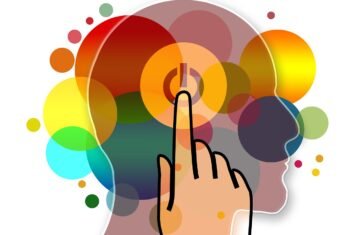As a psychotherapist, I’m not typically focussed on diagnosing patients but there are times when it’s important that there is a shared understanding of symptoms so that we can better treat the condition. Depression and Obsessive Compulsive Disorder (OCD) share some symptoms but look beneath the surface and there are some distinct differences. Getting it right can make all the difference to recovery, as we’ll explore below.
Understanding OCD and Depression
Before dissecting the intricacies of misdiagnosis, let’s establish a foundation for understanding OCD and depression individually.
OCD is characterized by intrusive, distressing thoughts (obsessions) and repetitive behaviors or mental acts (compulsions) performed to alleviate anxiety. These obsessions and compulsions significantly impact daily functioning, leading to substantial distress.
Depression: Depression, in contrast, is marked by persistent feelings of sadness, hopelessness, and a pervasive lack of interest or pleasure in activities. It often involves negative self-perceptions, a pessimistic outlook on the future, and physical symptoms such as changes in appetite and sleep patterns.
The Overlap in OCD and Depression Symptoms
While symptoms of OCD and depression can overlap, understanding the specific characteristics that distinguish each condition is crucial. One notable commonality is the occurrence of rumination – a mental process where individuals repetitively focus on certain thoughts. However, the content and focus of these ruminations differ between the two disorders. I’ll use some fictional examples to help illustrate this point.
Ruminative Thoughts:
- Depression: Sarah, a 32-year-old artist, constantly ruminates on her perceived lack of talent and past failures, leading to feelings of hopelessness and inadequacy.
- OCD: Mark, a 28-year-old accountant, experiences intrusive thoughts about harming loved ones, engaging in rituals like checking and counting to neutralize distressing thoughts.
Social Withdrawal:
- Depression: Emily, a 40-year-old teacher, withdraws from social activities due to a pervasive sense of emptiness and disinterest in once-enjoyable activities.
- OCD: James, a 35-year-old IT professional, avoids social interactions due to fears of contamination, with compulsive washing rituals dominating his daily routine.
Sleep Patterns and Concentration Difficulties:
- Both depression and OCD can manifest with changes in sleep patterns and concentration difficulties, contributing to the challenge of differentiating between the two disorders.
Why the Confusion? Examples of Misdiagnoses
Misdiagnoses often stem from overlapping symptoms and shared experiences between OCD and depression. Here are two examples illustrating the challenges clinicians may encounter:
Stigma and Lack of Awareness:
- Anna, a 25-year-old graphic designer, presents with symptoms of both OCD and depression. The stigma surrounding OCD may cause her to hesitate in disclosing intrusive thoughts about harm, focusing instead on more widely recognised depressive symptoms.
Overlap in Symptoms:
- Michael, a 30-year-old project manager, experiences guilt, low energy, and insomnia, symptoms common to both depression and OCD. Without a careful exploration of the specific nature of his thoughts and behaviors, a misdiagnosis is likely.
Patient Silence on Obsessions:
- Rachel, a 22-year-old student, experiences fears of contamination but hesitates to share this due to shame. The therapist, focusing on depressive symptoms, may overlook the underlying OCD.
The Importance of a Thorough Assessment
To prevent misdiagnoses, mental health professionals must conduct comprehensive assessments, exploring the content of ruminations, exploring the presence of obsessions and compulsions, and considering specific triggers and rituals.
Detailed Exploration of Ruminations: Uncovering the content of ruminative thoughts is crucial. In depression, these thoughts often center on the self, such as feelings of worthlessness. In OCD, the focus is more likely to be on intrusive, fear-inducing thoughts.
Example: Consider Tom, a 35-year-old teacher seeking help for persistent distress. While expressing feelings of sadness and low energy, Tom also reveals recurring thoughts about harming others. This specific content unveils a crucial aspect of his mental landscape, pointing toward the possibility of OCD rather than depression.Identification of Obsessions and Compulsions: Pinpointing the presence of obsessions and compulsions is essential for an accurate diagnosis of OCD.
- Example: Lisa, a 28-year-old nurse, initially presents symptoms aligning with depression, such as low energy and guilt. However, upon closer examination, Lisa discloses intrusive thoughts about losing control and engaging in harmful actions, coupled with compulsive mental rituals. This revelation shifts the diagnostic focus toward OCD, emphasising the need for a nuanced assessment.
Assessment of Rituals and Avoidance Behaviours: Understanding the specific rituals and avoidance behaviors is vital for differentiating between OCD and depression.
- Example: Alex, a 30-year-old software engineer, discusses difficulty concentrating and persistent guilt. Further exploration uncovers rituals of checking and counting, shedding light on potential OCD features. This specific insight into Alex’s behaviors aids in crafting a more accurate diagnosis and tailoring an effective treatment plan.
Treatment Approaches
Once a precise diagnosis is established, appropriate treatment strategies can be employed. For depression, psychotherapy, such as Cognitive Behavioral Therapy (CBT) and medication, is often recommended. In OCD, Exposure and Response Prevention (ERP) therapy, a specialised form of CBT, is considered highly effective. The primary goal of ERP is to help individuals confront and gradually overcome their irrational fears or obsessions by exposing them to anxiety-provoking situations or stimuli.
Medications Overview:
Antidepressants for Depression:
- Selective Serotonin Reuptake Inhibitors (SSRIs) and Serotonin-Norepinephrine Reuptake Inhibitors (SNRIs) are commonly prescribed for depression. These medications increase the availability of neurotransmitters like serotonin and norepinephrine in the brain, alleviating depressive symptoms.
Antidepressants for OCD:
- SSRIs, particularly fluoxetine, fluvoxamine, and sertraline, are FDA-approved for treating OCD. These medications help regulate serotonin levels and reduce the frequency and intensity of obsessive-compulsive symptoms.
Anti-anxiety Medications:
- Benzodiazepines may be prescribed for the short-term management of anxiety symptoms in both depression and OCD. However, these medications are not typically recommended for long-term use due to their addictive properties.
Antipsychotic Medications:
- Atypical antipsychotics, such as risperidone or aripiprazole, may be used as adjuncts in severe cases of OCD that do not respond to other treatments.
Final thoughts
When patients enter therapy, it can take time to trust that the therapist is there to listen and not judge. This means that it may take some time before the patient is willing to share enough information to help the therapist gain adequate insight into exactly what is going on for the patient.
It also highlights the importance of a good therapeutic relationship as well patient honesty. If the patient presents with depression and fails to share the real nature of his/her intrusive thoughts, it could result in the patient not receiving the treatment that’s going to work and a lot of unnecessary suffering.
The therapist also needs a good understanding of the subtle nuances that shape these conditions. By fostering awareness, erasing stigma, and conducting comprehensive assessments, we can navigate these complexities and provide individuals with accurate diagnoses and effective treatment plans.










